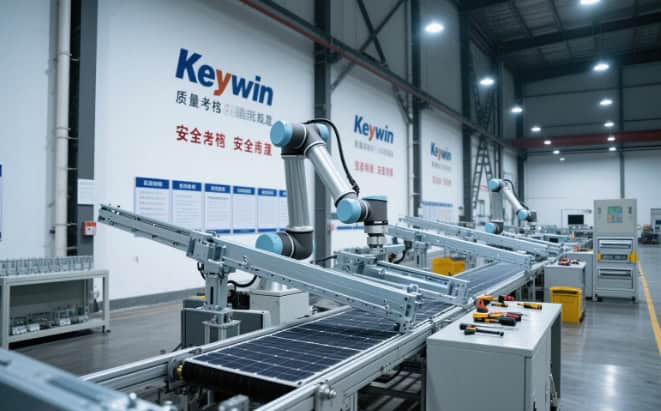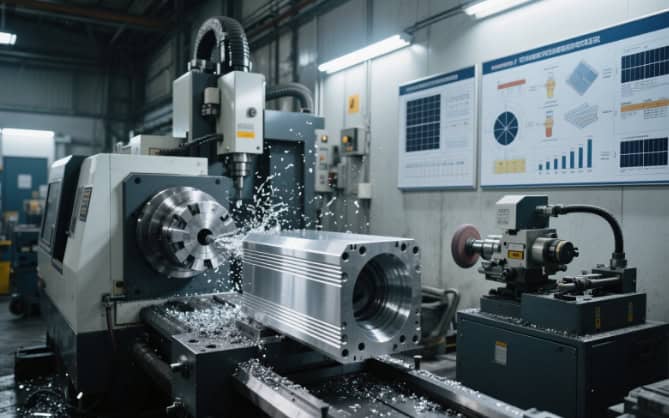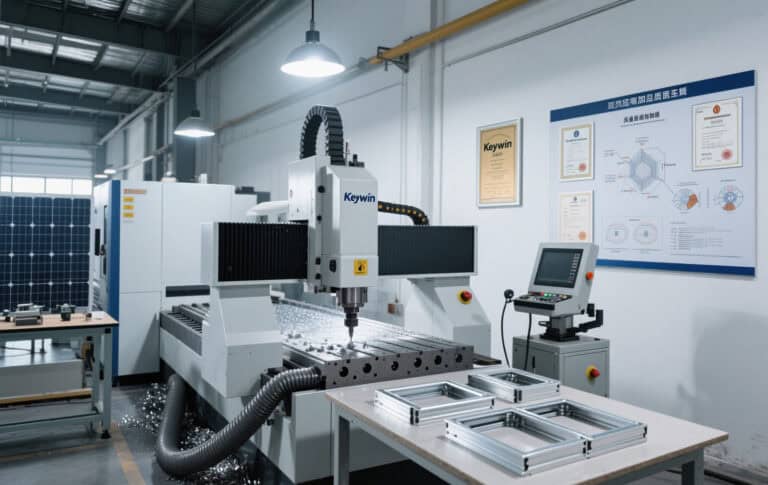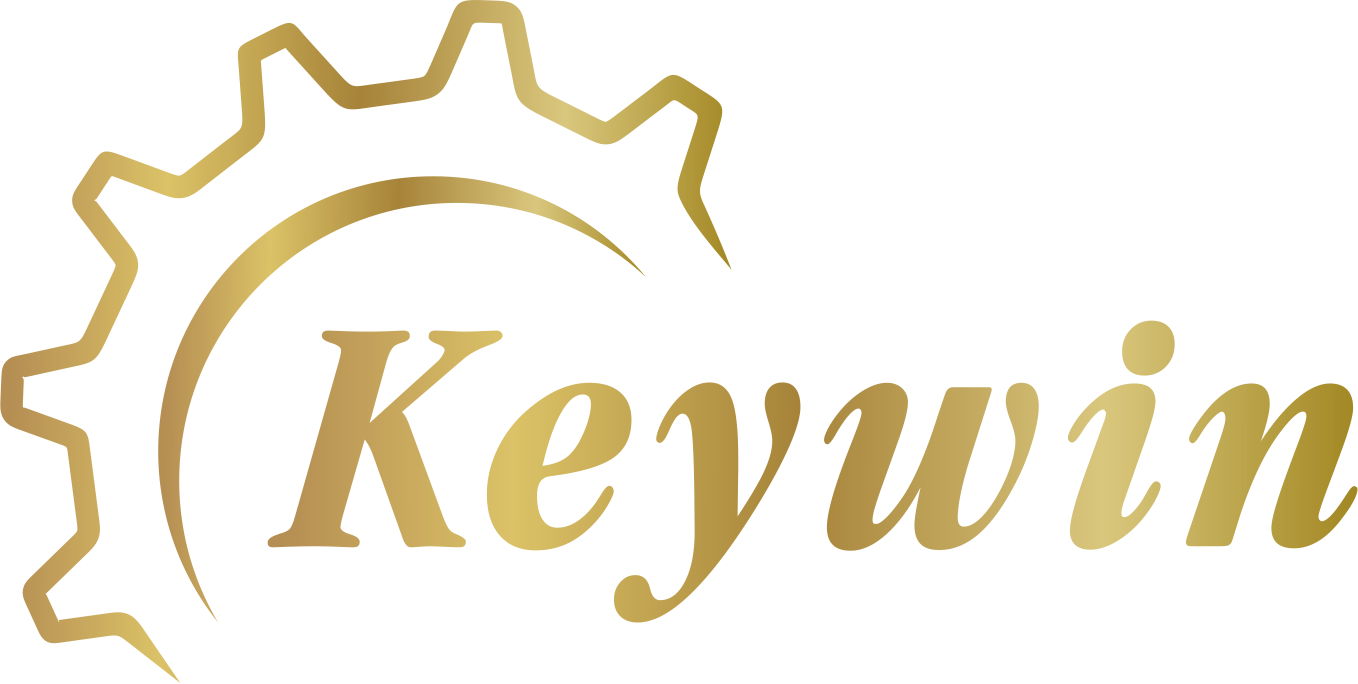In the rapidly evolving landscape of renewable energy, precision metal fabrication stands as a cornerstone of project success. The accelerated growth of new energy engineering has imposed stricter demands on the performance, dimensional accuracy, and craftsmanship of structural components. As a leading authority in precision metal fabrication, Keywin leverages its technical excellence and deep industry insights to drive the high-quality development of renewable energy projects. This article delves into how precision metal processing provides critical support for manufacturing renewable energy components, while showcasing Keywin’s practical applications and commitment in the realm of precision metal fabrication.
I. Common Metal Components in Renewable Energy Equipment
All types of renewable energy systems incorporate critical metal components that rely on structural support and power transmission. Below are typical metal structures in mainstream equipment:
1. Wind Power Equipment
Gearbox Assemblies: Include core power transmission components such as planetary gears and ring gears.
Main Shaft & Bearing Systems: Designed to bear rotational loads from blades and ensure stable operation of the entire system.
2. Solar Power Equipment
- PV Mounting Systems: Metal components like connectors and bases, supporting and adjusting the angle of PV panels.
- Concentrated Solar Power (CSP) Systems: Metal frames and support structures for fixing and adjusting mirrors.
3. Hydropower Equipment
- Turbine Blades: Key structures converting hydraulic energy into rotational power.
- Water Guiding Mechanism Components: Such as guide vane shafts and connecting rods, facilitating water flow regulation and guidance.

II. Key Technical Requirements for New Energy Structural Component Manufacturing
Renewable energy equipment is accelerating towards a new era of high-performance and high-integration. Whether driven by the large-scale development of wind power or the multi-scenario applications of photovoltaic and energy storage systems, core metal components now face stricter performance demands. Structural components no longer merely serve as load-bearing and connecting elements; they have become the collaborative foundation for system stability, intelligent control, and thermal management.
To ensure long-term reliable operation in complex environments, metal structural components require comprehensive optimization in material properties, precision metal fabrication, and functional integration. This section summarizes the five key performance requirements for new energy critical components, serving as the technical cornerstone for their efficient and safe operation.
1. Enhanced Load-Bearing Capacity and Structural Stability
As new energy power equipment evolves toward larger capacity and higher power, core structural components face stricter demands for load-bearing capacity and stability. Components must exhibit stronger stress resistance to ensure safety and durability during long-term, high-frequency operation.
2. Corrosion Protection and Wind Resistance for Extreme Environments
New energy projects operate in diverse scenarios—for example, offshore wind farms must withstand harsh conditions like high salt mist and strong typhoons. This requires metal components to feature excellent corrosion-resistant coatings, anti-rust treatments, and structural stability to prevent hazards from corrosion, cracking, or other issues.
3. Balance of Lightweight Design and Structural Strength
To improve energy efficiency and reduce transportation and installation costs, structural components must adopt lightweight materials (e.g., high-strength aluminum alloys, composite materials) while maintaining overall mechanical properties through rational design.
4. Assembly Precision for Highly Integrated Structures
New energy equipment is advancing toward integration and high integration (e.g., integrated die-casting, electric drive systems, battery pack integration), making assembly precision of structural components increasingly critical. Components must ensure high dimensional consistency while strictly controlling assembly clearances and positioning errors to guarantee stable operation, improved assembly efficiency, and convenient maintenance.
5. Integration of Intelligent Components and Thermal Management Functions
Structural components are gradually assuming composite functions such as sensor installation, heat conduction, and electromagnetic shielding. They must balance strength design with system compatibility to support equipment intelligence and stable operation.
In summary, new energy equipment imposes unprecedented requirements on precision metal fabrication—from structural strength and corrosion resistance to assembly precision and multifunctional integration. Achieving these key performances relies on a manufacturing system characterized by high precision, strong adaptability, and rapid response.
So, what specific advantages does precision metal fabrication offer? How does it tackle the diverse and rigorous application scenarios in new energy? The following analysis explores these questions from both capability-level and case-study perspectives.
III. How Precision Metal Fabrication Meets Industry Component Requirements
In response to the strict manufacturing demands of the new energy sector, precision metal fabrication has gradually replaced traditional extensive processes as the critical solution for structural component manufacturing. Its advantages lie in higher precision, stronger material compatibility, and more flexible process integration.
Key technical advantages include:
1. High-Precision Dimensional Control and Consistent Manufacturing
Precision metal fabrication can control dimensional errors of key components within ±0.005mm, ensuring precise assembly and efficient operation. This is particularly critical for photovoltaic tracking systems and battery module brackets, where frequent adjustments or dense installations require precise dimensions to guarantee sensitive system response and long-term stability.
2. Material Compatibility and High-Strength Structure Assurance
Precision metal fabrication accommodates diverse materials—including aluminum alloys, stainless steel, and high-strength carbon steel—and supports high-strength cutting, welding, and surface treatment for complex structures. This provides structural solutions that balance strength and functionality across different applications.
3. Multi-Process Integration and Flexible Manufacturing Capability
With the increasing complexity of equipment structures, traditional single-process manufacturing is no longer sufficient. Precision metal fabrication supports collaborative manufacturing via CNC, five-axis machining, automatic welding, and integrated clamping—enhancing production efficiency and customization capabilities to meet the rapid iteration and variable design needs of new energy equipment.
As renewable energy projects (e.g., wind and solar power) accelerate, equipment structures are becoming more complex and operating environments more rigorous, posing real challenges to manufacturing precision and durability. To visually demonstrate how precision machining addresses these needs, the following case studies analyze typical scenarios:
1.1 Precision metal fabrication ensuring Long-Term Stability of PV Bracket Adjustment Structures
In solar power systems, the manufacturing precision of brackets directly impacts the installation position and tilt angle of photovoltaic modules. Misaligned holes or structural deformation can reduce light absorption efficiency. In solar tracking systems, where hinges and connecting structures require frequent angle adjustments, machining precision is even more critical. Key components typically undergo five-axis CNC precision machining precision metal fabrication to control hole position tolerance within ±0.01 mm, enhancing the tracking system’s stability during high-frequency operation and ensuring sensitive, accurate angle adjustment for PV panels.
1.2. Specialized Welding and Surface Treatment Processes: Enhancing Corrosion Resistance of Wind Turbine Tower Bolts
In wind energy applications, tower bolts endure strong wind loads and alternating stresses during long-term operation. Combined with the high salt mist environment in coastal areas, this easily causes bolt corrosion or loosening, threatening overall structural safety. To address this, the industry commonly uses high-strength carbon steel bolts supplemented by surface protection processes like Dacromet coating or thermal spraying. Bolts treated with these processes can withstand 5,000 hours of salt spray corrosion testing—far exceeding the industry average of 3,000 hours—significantly extending the service life and maintenance cycle of wind turbine towers.

IV. Keywin's Core Capabilities in Renewable Energy Component Machining
Facing the rigorous demands of new energy equipment under complex conditions—including high loads, strong corrosion, and long-term operation—Keywin provides one-stop precision metal fabrication support covering materials, processes, and customized services, enabling clients to build more stable and durable system components.
1. Comprehensive Advanced Manufacturing Services
Keywin offers diverse manufacturing solutions, including CNC machining, forging, injection molding, and precision metal fabrication, integrating 5-axis CNC machining (precision ±0.005 mm), laser cutting (kerf precision ±0.05 mm), and welding (welding pass rate 99.9%). These composite processes are particularly suitable for manufacturing complex, dimension-critical components such as solar brackets, wind power connecting flanges, and battery casings.
2. Diverse Materials for Extreme Environments
Keywin understands the special material performance requirements of new energy scenarios, offering highly adaptable metal materials:
Stainless Steel 316L: With chloride ion corrosion protection (30% higher corrosion resistance than 316), and -40°C low-temperature toughness, ideal for harsh offshore wind environments. Applied in a 5MW offshore wind turbine tower flange connector with 5-year operation without corrosion reports.
Aluminum Alloy 6061-T6: Weighing 1/3 of steel, reducing support structure loads. Hard anodizing forms a 60-80μm dense oxide film for UV resistance, balancing installation cost and strength.
High-Strength Steel Q690D: Yield strength ≥690MPa, ensuring safety with 15% wall thickness reduction; Z-direction certified to prevent lamellar tearing, meeting large-scale wind turbine needs.
3. Customization Advantages
Recognizing the fast-paced and high-reliability demands of new energy projects, we offer:
- Rapid Response: 72-hour sample delivery, 15-day emergency order fulfillment (industry average: 30 days).
- End-to-End Quality Control: 100% inspection from raw material testing to delivery, with defect rate <0.05% (industry average: 0.2%).
V. Keywin—Your Strategic Partner for New Energy Metal Manufacturing
Keywin is more than a component supplier; we are a full-cycle partner for new energy projects from development to delivery. Our one-stop support(precision metal fabrication)—from technical consultation and material selection to prototyping verification—helps clients shorten lead times and enhance system stability. Click to get a customized solution from Keywin engineers.




